- Choosing the Right Flowers
- 1. Climate Compatibility
- 2. Sunlight Requirements
- 3. Soil Type
- 4. Flowering Time
- 5. Growth Habit
- Consider the Climate
- Know Your Soil
- Soil Types
- Assessing Your Soil
- Improving Your Soil
- Choosing Flowers for Your Soil
- Preparing the Soil
- 1. Clear the area
- 2. Loosen the soil
- 3. Remove any existing plants
- 4. Improve the soil quality
- 5. Test the soil pH
- 6. Add fertilizer
- 7. Level the soil
- Removing Weeds and Debris
- Amending the Soil
- 1. Test the soil
- 2. Add organic matter
- 3. Adjust pH levels
- 4. Incorporate fertilizer and nutrients
- 5. Improve drainage
- 6. Mulch the soil
- Sowing Techniques
- 1. Prepare the soil
- 2. Choose the right seeds
- 3. Sow at the proper depth
- 4. Space the seeds properly
- 5. Water regularly
- 6. Protect from frost
- 7. Provide sunlight
- 8. Thin out seedlings
- Direct Sowing
- Advantages of Direct Sowing
- Tips for Direct Sowing
- Conclusion
- Starting Seeds Indoors
- Choose the Right Containers
- Use the Right Soil
- Provide Adequate Light
- Water Carefully
- Adjust Temperature and Humidity
- Harden Off Seedlings
- Keep a Journal
- Watering and Fertilizing
- Watering
- Fertilizing
- Questions and Answers:
- What kind of flowers can be sown in April in the open ground?
- Is it necessary to prepare the soil before sowing flowers in April?
- What are some tips for sowing flowers in April?
- Can I sow flower seeds directly in the ground in April?
- What are the advantages of sowing flowers in April in the open ground?
- What are some common mistakes to avoid when sowing flowers in April?
- Videos: How To Grow Flower Seeds Fast (With Update)
April is the perfect time to start sowing flowers in the open ground. With the arrival of warmer weather, longer days, and the threat of frost diminishing, gardeners can finally get their hands dirty and begin the process of beautifying their outdoor spaces. Whether you’re an experienced gardener or a beginner looking to try your hand at gardening, sowing flowers in April is a great way to add color and vibrancy to your garden.
Before you start sowing, it’s important to choose the right flowers for your garden. Consider factors such as the amount of sunlight your garden receives, the type of soil you have, and the climate in your area. Some flowers that are well-suited for April sowing include marigolds, petunias, zinnias, and sunflowers. These flowers are easy to grow and can add a splash of color to any garden.
When sowing flowers in April, it’s important to prepare the soil properly. Remove any weeds, rocks, and debris from the area where you plan to sow your flowers. Loosen the soil with a garden fork or tiller, and add organic matter such as compost or aged manure to improve the soil’s fertility. This will create a favorable environment for your flowers to grow and thrive.
When it comes to sowing the seeds, follow the instructions on the seed packet for the specific flower you’re planting. In general, you’ll want to sow the seeds at the appropriate depth, usually about twice the diameter of the seed. Water the area well after sowing to ensure good seed-to-soil contact and keep the soil moist as the seeds germinate.
With proper care and attention, your flowers should start to sprout and bloom in a few weeks. Be sure to provide adequate water, light, and drainage for your flowers to thrive. Monitor the soil moisture and water as needed, and protect your young plants from any late frosts or extreme weather conditions. Soon enough, you’ll have a beautiful garden filled with vibrant flowers that will bring joy and beauty to your outdoor space throughout the spring and summer months.
Choosing the Right Flowers
When sowing flowers in April in the open ground, it is important to choose the right types of flowers that are suitable for this time of the year. Here are some factors to consider when selecting flowers:
1. Climate Compatibility
Consider the climate of your region and choose flowers that are compatible with the weather conditions in April. Some flowers are more tolerant of cooler temperatures and can withstand frost, while others are more suitable for warmer climates. Make sure to select flowers that will thrive in your specific climate.
2. Sunlight Requirements
Take into account the amount of sunlight your garden receives in April. Some flowers require full sun, while others can tolerate partial shade. Ensure you choose flowers that are appropriate for the amount of sunlight available in your garden.
3. Soil Type
Consider the type of soil in your garden. Some flowers prefer well-draining soil, while others can tolerate heavier, clay-like soil. It is essential to choose flowers that will be able to grow in the type of soil you have.
4. Flowering Time
Think about when you want your flowers to bloom. Some flowers have a longer flowering period and will continue to bloom throughout the summer, while others have a shorter blooming period. Choose flowers that will provide the desired flowering time for your garden.
5. Growth Habit
Consider the growth habit of the flowers you choose. Some flowers grow tall and may require staking or support, while others are more compact and suitable for borders or containers. Select flowers that will fit well in your garden and complement the overall design.
By taking these factors into account, you can ensure that you choose the right flowers for sowing in April in the open ground. This will increase your chances of success and create a beautiful and vibrant garden.
Consider the Climate
When sowing flowers in April in the open ground, it is crucial to consider the climate of your region. The climate plays a significant role in determining which flowers will thrive and when it is the best time to sow seeds.
First, you need to determine the hardiness zone of your area. Hardiness zones are based on the average minimum winter temperature and help gardeners select appropriate plants for their region. You can find the hardiness zone map for your country or region online or consult with local gardening experts.
Once you know your hardiness zone, you can choose flower varieties that are suitable for your climate. Some flowers can tolerate frost and cold temperatures, while others require warmer conditions to germinate and grow. In colder regions, it is advisable to select cold-tolerant flowers like pansies, snapdragons, or calendula. In warmer regions, you have a wider range of options, including zinnias, marigolds, or sunflowers.
It is also important to consider the average last spring frost date in your area. Before sowing flowers, you need to make sure that the risk of frost has passed. Sowing seeds too early can result in poor germination or damage to young plants. The last frost date can vary from year to year, so it is recommended to check local weather forecasts or consult with experienced gardeners.
Moreover, pay attention to the amount of sunlight your garden receives. Some flowers prefer full sun, while others can tolerate partial shade. Observe your garden throughout the day to determine which areas receive the most sunlight. This information will help you choose the right flowers for each specific location in your garden.
In conclusion, understanding your climate and its specific characteristics is crucial when sowing flowers in April in the open ground. By considering the hardiness zone, last frost date, and sunlight conditions, you can select the most suitable flower varieties and ensure their successful growth. Proper planning and knowledge of the climate will greatly contribute to the beauty and success of your flower garden.
Know Your Soil
Before sowing flowers in April in the open ground, it is important to know the type of soil you have. Different plants have different soil preferences, and understanding your soil composition will help you choose the right flowers for your garden.
Soil Types
There are several different types of soil, including sandy, clay, loam, and silt. Each soil type has its own characteristics and drainage properties, which can affect plant growth.
Sandy soil is loose and drains quickly. It is easy to work with, but may require more frequent watering and fertilization. Clay soil is heavy and retains water, making it prone to waterlogging. It can be difficult to work with, but proper amendments can improve its drainage. Loam soil is a mixture of sand, silt, and clay, making it ideal for many plants. Silt soil is similar to clay soil but has smaller particles and better drainage.
Assessing Your Soil
To determine your soil type, you can perform a simple texture test. Take a handful of moist soil and try to form a ball with it. Sandy soil will not hold its shape and will easily crumble, while clay soil will form a dense, hard ball. Loam soil will form a ball that holds its shape but easily breaks apart, and silt soil will form a weak ball that breaks apart with little pressure.
You can also send a soil sample to a laboratory for a more detailed analysis. This will provide information on the pH level, nutrient content, and organic matter in your soil.
Improving Your Soil
If your soil is not ideal for growing flowers, there are several ways to improve it. Adding organic matter, such as compost or well-rotted manure, can improve soil structure and nutrient content. Incorporating organic matter into the soil will also help with moisture retention and drainage.
You can also adjust the pH level of your soil by adding acidic or alkaline amendments, such as sulfur or lime. This is important as different flowers thrive in different pH ranges.
Choosing Flowers for Your Soil
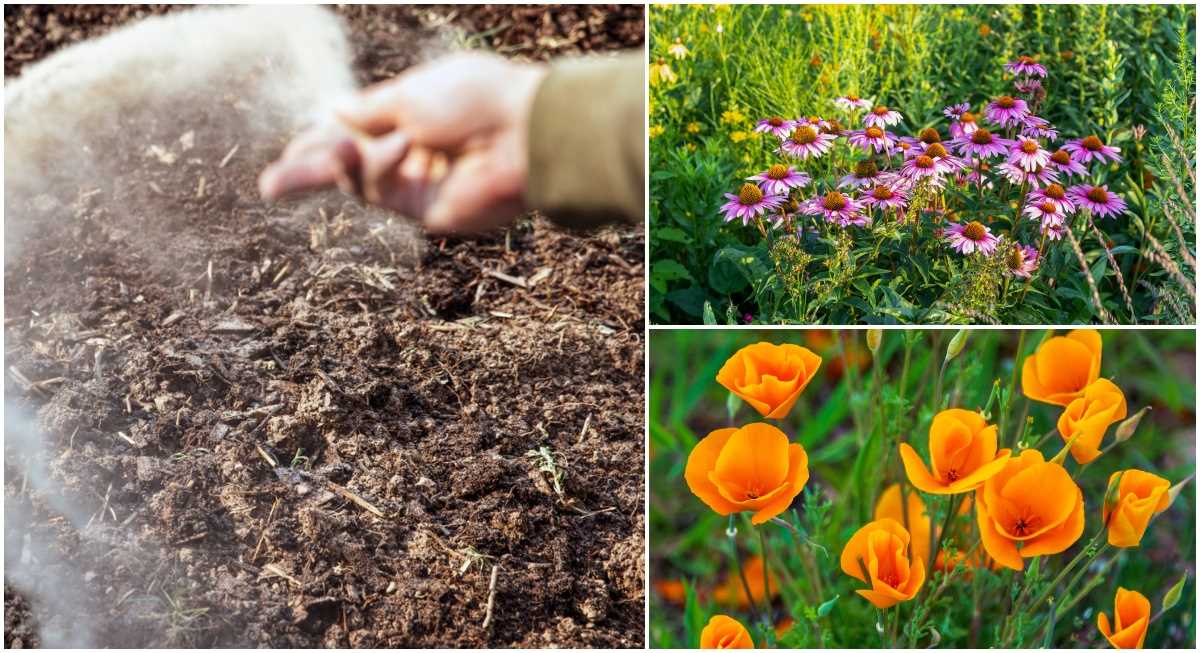
Once you know your soil type and have made any necessary improvements, you can select flowers that are well-suited to your garden. Some flowers, like marigolds and zinnias, are tolerant of a wide range of soil types and can grow in almost any conditions. Others, such as roses and delphiniums, have specific soil preferences and may require additional amendments.
Consider factors like sunlight, water requirements, and hardiness when choosing flowers for your soil. Doing so will help ensure that your flowers thrive and bloom beautifully in your garden.
Preparing the Soil
To ensure that your flowers thrive when planted in April, it’s important to properly prepare the soil in your garden. Here are some guidelines to help you get started:
1. Clear the area
Begin by removing any weeds, rocks, or debris from the area where you plan to sow your flower seeds. This will help create a clean and weed-free space for your plants to grow.
2. Loosen the soil
Using a garden fork or a tiller, loosen the soil to a depth of at least 8-10 inches. This will help promote better root growth and improve drainage in the soil.
3. Remove any existing plants
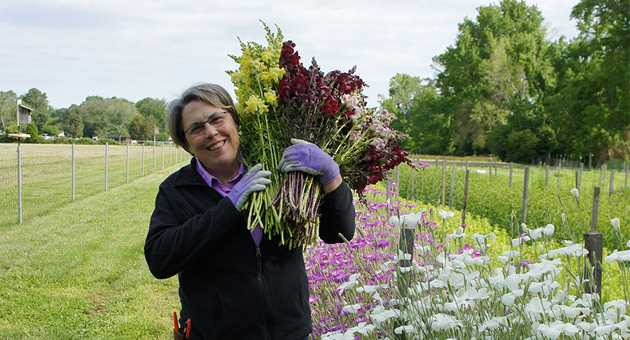
If there are any existing plants or grass in the area, make sure to remove them before sowing your flower seeds. This will prevent competition for resources and give your flowers a better chance to establish themselves.
4. Improve the soil quality
If your soil is heavy clay or sandy, it’s beneficial to amend it with organic matter. This can be done by adding well-rotted compost, aged manure, or peat moss to the soil. Mixing in these organic materials will help improve the soil structure and provide essential nutrients for your flowers.
5. Test the soil pH
It’s a good idea to test the pH level of your soil before planting. Most flowers prefer a slightly acidic to neutral pH range. If your soil is too acidic or alkaline, you can adjust it by adding the appropriate soil amendments.
6. Add fertilizer
Prior to planting, you can apply a balanced slow-release fertilizer to the soil. This will provide your flowers with the necessary nutrients they need to grow and thrive throughout the season.
7. Level the soil
Finally, make sure to level the soil surface using a rake or garden tool. This will create a smooth surface for sowing your flower seeds and ensure even germination.
By following these soil preparation guidelines, you’ll be on your way to setting up the perfect environment for sowing flowers in April. With proper soil preparation, you can expect healthy and vibrant blooms all season long.
Removing Weeds and Debris
One important step in sowing flowers in April in the open ground is to remove weeds and debris from the planting area. Weeds can compete with flowers for nutrients, water, and sunlight, and debris can obstruct the growth of young plants. Here are some tips and guidelines for effectively removing weeds and debris:
- Identify weeds: Before removing weeds, it is important to know what they look like. Weeds can vary in appearance and growth habits, so being able to identify them correctly will help to effectively remove them.
- Manual removal: One of the most common ways to remove weeds is by hand. Use a garden trowel or hand fork to loosen the soil around the base of the weed, and then gently pull it out, ensuring that you remove the entire root system.
- Mulching: Applying a layer of mulch around the flowers can help to suppress weed growth. Mulch not only prevents sunlight from reaching weed seeds, but it also helps to conserve soil moisture and regulate soil temperature.
- Chemical control: In cases where manual removal and mulching are not sufficient, you can consider using a herbicide. However, it is important to choose an herbicide that is labeled for the specific types of weeds you are trying to control, and always follow the instructions provided.
- Remove debris: Along with weeds, it is important to remove any debris from the planting area. Debris such as leaves, twigs, and rocks can hinder the growth of young plants and make the area look untidy. Use a rake or garden fork to gather and remove any debris from the planting site.
By taking the time to remove weeds and debris before sowing flowers in April, you can create a clean and healthy planting area that provides optimal conditions for your flowers to thrive.
Amending the Soil
Preparing the soil before sowing flowers in April is crucial for their successful growth and development. By amending the soil, you can enhance its fertility, drainage, and nutrient content, creating an ideal environment for your flowers to thrive. Here are some tips and guidelines for amending the soil:
1. Test the soil
Before you begin amending the soil, it’s recommended to test its pH level and nutrient composition. This will help you identify any deficiencies or imbalances that need to be addressed. You can purchase a soil testing kit from a garden center or send a soil sample to a laboratory for analysis.
2. Add organic matter
Organic matter, such as compost, well-rotted manure, or leaf mold, is a great amendment for improving soil structure, moisture retention, and fertility. Spread a layer of organic matter over the topsoil and mix it thoroughly using a garden fork or a tiller. Aim to add about 2-3 inches of organic matter to the soil.
3. Adjust pH levels
If the soil test reveals that the pH level is too acidic or alkaline, you can adjust it by adding lime or sulfur. Lime is used to raise the pH level, while sulfur is used to lower it. Follow the recommended application rates according to the soil test results and mix the amendments well into the soil.
4. Incorporate fertilizer and nutrients
Based on the soil test results, you may need to add specific fertilizers or nutrients to ensure optimal plant growth. This could include nitrogen, phosphorus, potassium, or other micronutrients. Follow the guidelines on the fertilizer package for the appropriate application rates and methods.
5. Improve drainage
If your soil tends to retain water and becomes waterlogged, it’s important to improve its drainage. This can be done by incorporating coarse sand, perlite, or vermiculite into the soil. These amendments will help create air pockets and allow excess water to drain away effectively.
6. Mulch the soil
To further enhance the soil structure and moisture retention, apply a layer of organic mulch, such as wood chips or straw, around the planted area. Mulch helps regulate soil temperature, suppress weeds, and reduce moisture loss through evaporation.
By following these tips and guidelines for amending the soil, you can create a favorable growing environment for your flowers. Remember to periodically monitor the soil’s moisture levels and nutrient requirements throughout the growing season to ensure your flowers thrive and bloom beautifully.
Sowing Techniques
When it comes to sowing flowers in April in the open ground, there are several techniques that can help ensure successful germination and growth. Here are some tips and guidelines to follow:
1. Prepare the soil

Before sowing, make sure to prepare the soil properly. Remove any weeds or grass and loosen the top layer of soil with a garden fork or rake. This will create a better environment for seed germination.
2. Choose the right seeds
Select flower seeds that are suitable for sowing in April. Different flowers have different requirements for temperature and sunlight, so it’s important to choose seeds that will thrive in the conditions of your garden.
3. Sow at the proper depth
Refer to the packaging or seed instructions to determine the correct sowing depth for the specific flower seeds you are planting. In general, most flower seeds should be sown at a depth that is two to three times their size.
4. Space the seeds properly
Ensure adequate spacing between the seeds to allow for healthy growth. Overcrowding can lead to competition for resources and stunted plants. Follow the recommended spacing guidelines provided on the seed packaging or instructions.
5. Water regularly
Keep the soil consistently moist but not waterlogged. Watering gently with a fine mist or using a watering can will help prevent the seeds from being displaced or washed away. A light layer of mulch can also help retain moisture.
6. Protect from frost
Depending on your region, there may still be a risk of frost in April. If frost is predicted, cover your newly sown flower beds with a protective layer such as a frost cloth or plastic sheeting to prevent damage.
7. Provide sunlight
Most flower seeds need sunlight to germinate and grow. Make sure your garden bed is in a location that receives adequate sunlight for the specific flowers you are planting. Read the seed packaging or instructions for light requirements.
8. Thin out seedlings
Once the seedlings have emerged and are large enough to handle, thin them out to ensure proper spacing and prevent overcrowding. This will allow the remaining seedlings to grow stronger and healthier.
By following these sowing techniques, you can increase the chances of successful flower germination and enjoy a beautiful blooming garden in the summer months.
Direct Sowing
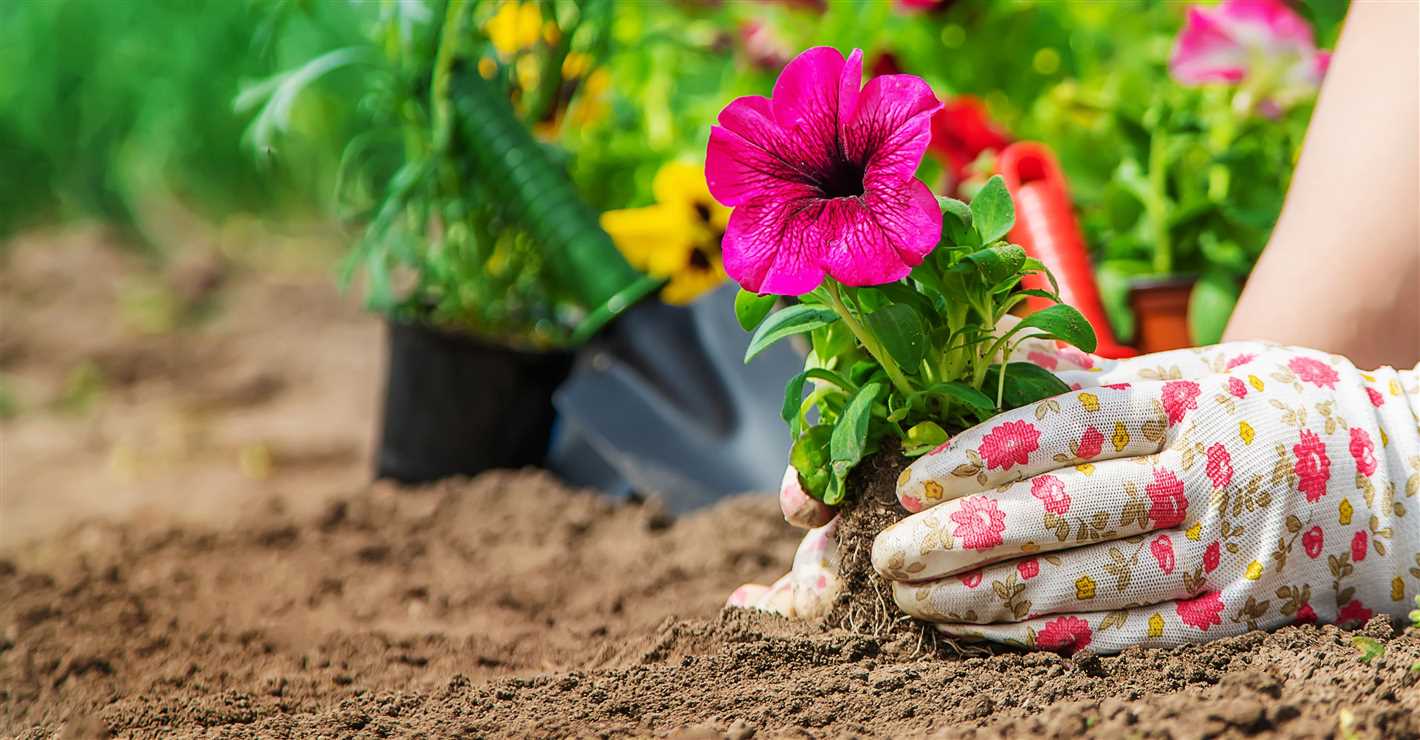
Direct sowing refers to the process of planting flower seeds directly into the open ground rather than starting them indoors or using transplants. This method is suitable for certain types of flowers that have a higher tolerance for cooler temperatures and can withstand the potential risks associated with direct sowing.
Advantages of Direct Sowing
- Simplicity: Direct sowing is a straightforward process that does not require any special equipment or expertise.
- Cost-effective: Starting flowers from seeds is generally more affordable than buying transplants.
- Stronger root systems: Plants grown from seeds tend to develop stronger root systems compared to transplants, resulting in more resilience and better long-term growth.
- Better adaptability: Direct sown plants are acclimated to their environment right from the start, making them better suited to handle local conditions.
- Larger variety: Many flower varieties are more readily available as seeds, giving gardeners a wider range of options to choose from.
Tips for Direct Sowing
Here are some tips to help you successfully sow flowers directly in the open ground:
- Choose the right time: Check the recommended planting time for each flower variety, as some prefer warmer soil temperatures while others can tolerate cooler conditions.
- Prepare the soil: Ensure that the soil is well-drained, free of weeds, and loosened before sowing. Remove any large debris and break up any clumps to create a fine seedbed.
- Follow spacing guidelines: Pay attention to the spacing requirements for each flower variety to ensure that plants have enough room to grow properly.
- Sow at the correct depth: Different flowers have different preferences when it comes to sowing depth. Always follow the instructions provided on the seed packet to determine the appropriate depth.
- Water regularly: Keep the soil consistently moist until the seeds germinate and the plants establish themselves. Be careful not to overwater, as this can lead to rotting.
- Protect the seedlings: Protect the emerging seedlings from pests, diseases, and harsh weather conditions. Consider using row covers or creating a makeshift protective barrier until the plants are strong enough.
- Thin out the seedlings: Once the seedlings have grown a few inches tall, thin them out according to the spacing requirements, removing the weaker ones to provide more space and nutrients for the remaining plants.
Conclusion
Direct sowing can be a rewarding way to grow flowers in your garden, offering cost savings, stronger plants, and a wider variety of options. By following the tips and guidelines provided, you can successfully sow flower seeds directly in the open ground and enjoy beautiful blooms throughout the season.
Starting Seeds Indoors
Starting seeds indoors is a great way to get a head start on your gardening season. By starting seeds indoors, you can extend your growing season and have stronger, healthier plants. Here are some tips and guidelines to help you get started.
Choose the Right Containers

When starting seeds indoors, it is important to choose the right containers. You can use plastic or biodegradable pots, egg cartons, or even small yogurt cups. Make sure the containers have drainage holes to prevent waterlogging.
Use the Right Soil
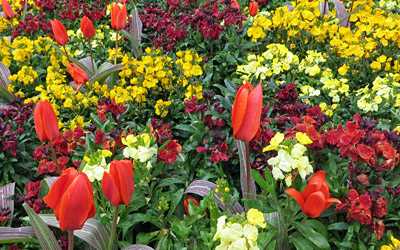
Using the right soil is crucial for successful seedlings. Use a well-draining soil mix that is specifically formulated for starting seeds. Avoid using garden soil, as it may contain diseases, pests, or weed seeds.
Provide Adequate Light
Seedlings need plenty of light to grow strong and healthy. If you don’t have access to natural light, you can use fluorescent lights or LED grow lights. Position the lights about 2 inches above the seedlings and keep them on for 14-16 hours a day.
Water Carefully
When starting seeds indoors, it is important to water carefully. Use a spray bottle or a watering can with a fine spout to avoid washing away the seeds. Water regularly to keep the soil moist, but not soggy.
Adjust Temperature and Humidity
Seeds need the right temperature and humidity to germinate successfully. Most seeds prefer temperatures between 65-75°F (18-24°C). You can use a seedling heat mat or a heating pad to provide consistent warmth. To increase humidity, cover the containers with plastic wrap or use a humidity dome.
Harden Off Seedlings
Before moving seedlings outdoors, it is important to harden them off. Gradually expose them to outdoor conditions by placing them outside for a few hours each day, gradually increasing the time over the course of a week. This will help the seedlings adjust to the temperature, wind, and sunlight.
Keep a Journal
Keeping a journal is a great way to keep track of your gardening progress. Note down important information such as seedling emergence dates, germination rates, and any issues or successes you encounter. This will help you learn from your experience and improve your gardening skills.
| Tips for Starting Seeds Indoors: |
|---|
| 1. Read the seed packets for specific instructions on planting depth, spacing, and germination time. |
| 2. Label your containers with the name and date of the seeds planted. |
| 3. Use a fan to provide air circulation and strengthen the seedlings. |
| 4. Avoid overwatering, as it can lead to damping-off disease. |
| 5. Consider using a seed starting tray or a mini greenhouse to create a more controlled environment. |
Following these tips and guidelines will help you start seeds indoors successfully. With a little patience and care, you’ll have healthy seedlings ready for transplanting into the open ground.
Watering and Fertilizing
Proper watering and fertilizing are essential for the healthy growth of flowers planted in April in the open ground. Here are some important guidelines to follow:
Watering
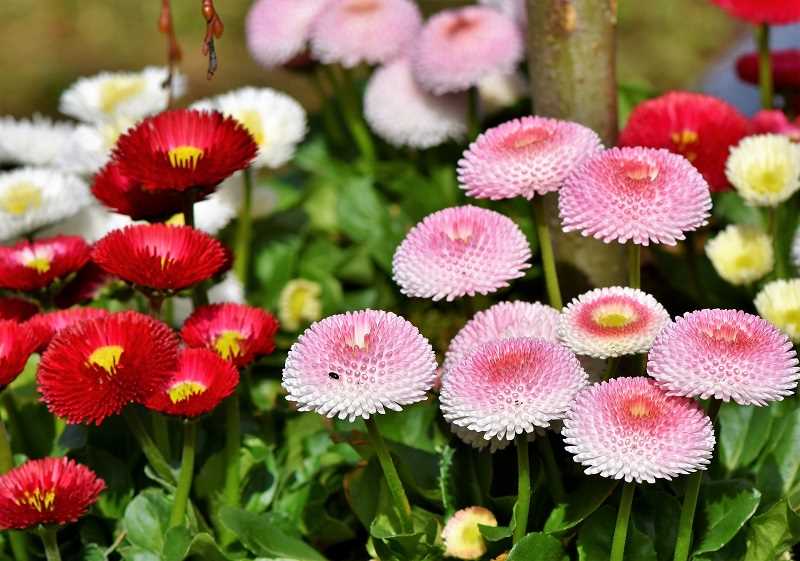
- Water the flowers regularly, especially during dry periods. Aim to keep the soil evenly moist, but not waterlogged.
- Water deeply and infrequently rather than shallowly and frequently. This encourages the plant’s roots to grow deeper and makes them more resilient to drought.
- Water the plants early in the morning or late in the evening to minimize evaporation.
- Use a watering can or hose with a gentle spray nozzle to avoid damaging the delicate flowers.
- Be mindful of the specific watering needs of each type of flower you have planted, as different species may have different requirements.
Fertilizing
- Apply a balanced slow-release fertilizer to the soil before planting the flowers.
- During the growing season, supplement the plants with a water-soluble fertilizer every 2-4 weeks. Follow the manufacturer’s instructions for the correct dilution and application rate.
- Avoid over-fertilizing, as this can lead to excessive leaf growth rather than flower production.
- Use organic fertilizers if possible, as they provide long-term benefits to the soil and are less likely to harm the environment.
Remember to monitor the moisture levels of the soil and adjust the watering frequency accordingly. Regularly inspect the plants for signs of nutrient deficiencies or over-fertilization, such as yellowing leaves or stunted growth. By providing adequate water and nutrients, you can ensure that your flowers thrive and bloom beautifully throughout the season.
Questions and Answers:
What kind of flowers can be sown in April in the open ground?
In April, you can sow a variety of flowers in the open ground, such as marigolds, zinnias, cosmos, sweet peas, and sunflowers.
Is it necessary to prepare the soil before sowing flowers in April?
Yes, it is recommended to prepare the soil before sowing flowers in April. This can be done by removing weeds, loosening the soil, and adding compost or organic matter to improve the soil fertility.
What are some tips for sowing flowers in April?
Some tips for sowing flowers in April include selecting the right variety for your climate, following the instructions on the seed packets, preparing the soil properly, and ensuring that the seeds are planted at the right depth.
Can I sow flower seeds directly in the ground in April?
Yes, you can sow flower seeds directly in the ground in April. However, it is important to make sure that the soil is warm enough and not too wet to avoid rotting of the seeds.
What are the advantages of sowing flowers in April in the open ground?
The advantages of sowing flowers in April in the open ground include earlier blooming, better establishment of plants, and the opportunity to enjoy a longer flowering period during the summer months.
What are some common mistakes to avoid when sowing flowers in April?
Some common mistakes to avoid when sowing flowers in April include sowing the seeds too deep or too shallow, sowing in soil that is too cold or wet, and not providing enough water or sunlight for the seedlings to grow.







